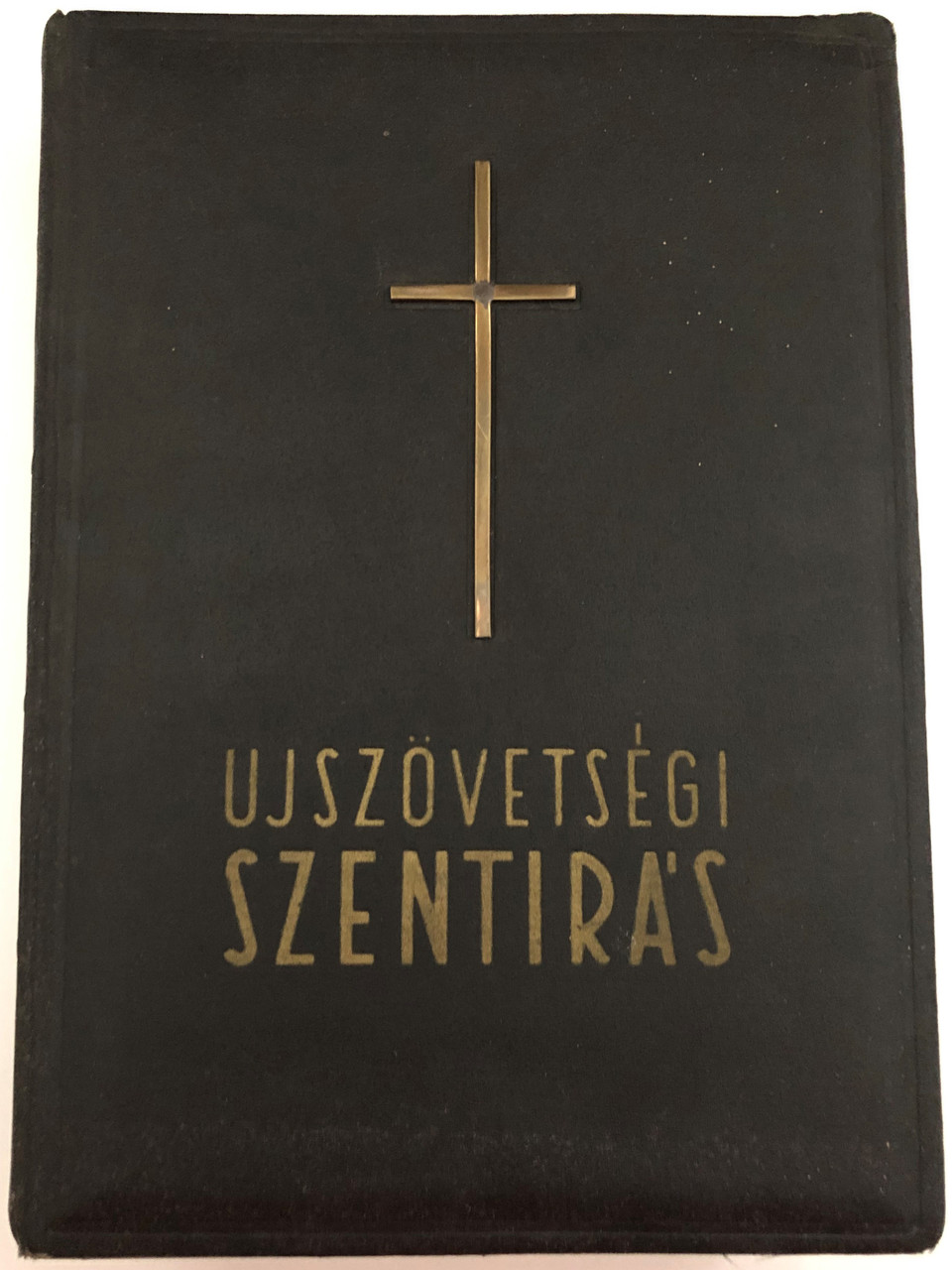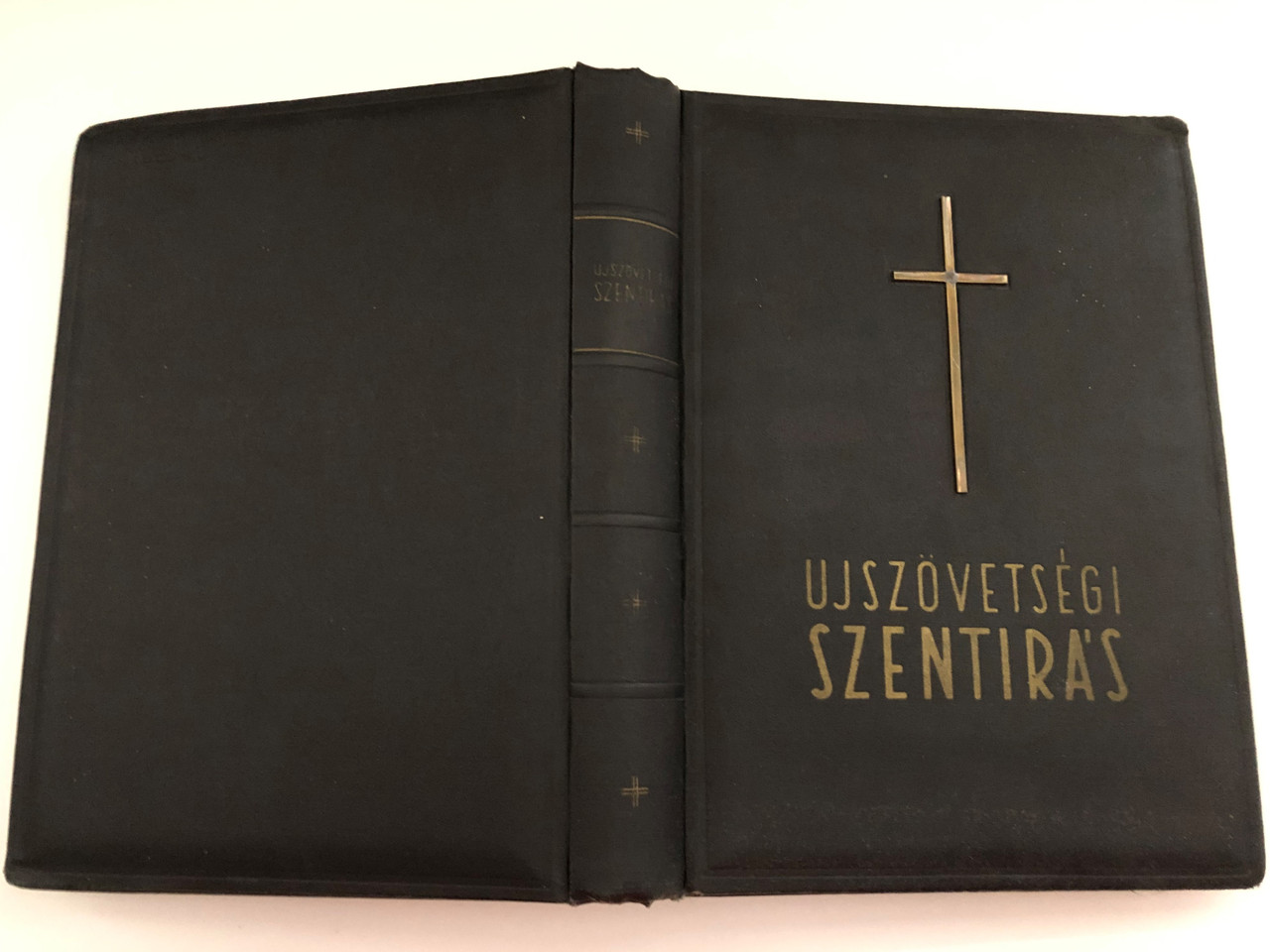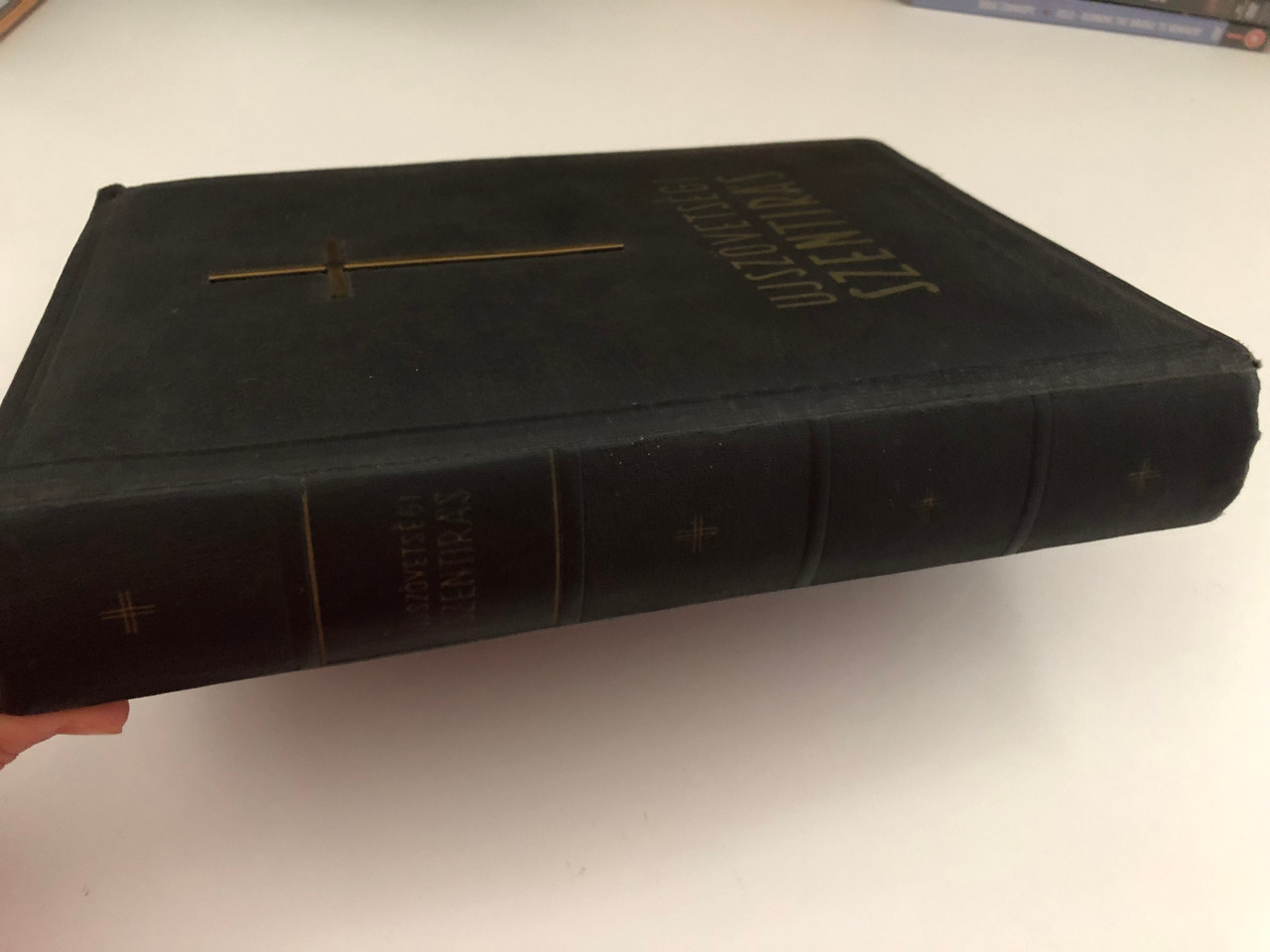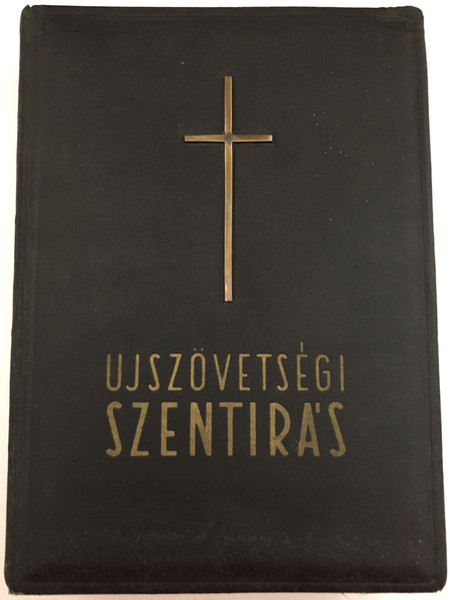Product Overview
ÚJSZÖVETSÉGI SZENTÍRÁS - The NEW TESTAMENT
ACCORDING TO THE VULGATA / György Káldi S. J.
THE TRANSLATION HAS BEEN PROCESSED WITH RESPECT TO THE ORIGINAL TEXT AND PROVIDED WITH INTRODUCTIONS AND NOTES
Introduction in English:
Introduction in Hungerian:
1529/1950. szám.
A Szentírás magyar nyelvű jegyzetes és képes kiadását, annak kinyomtatását, miután az átvizsgálás és ellenőrzés munkáját Dr. Takáts Ernő pápal prelátus, a Ward Kollégiumon a szentírástudomány tanára és Dr. Gigler Károly protonotarius-kanonok, a könyvvizsgáló bizottság elnöke gondosan elvégezték, az egyházjogi törvénykönyv 1391. kánonja értelmében engedélyezem
Dr. DRAHOS JÁNOS s. k., a 429. kánon alapján kormányzó, különleges felhatalmazásokkal ellátott érseki általános helytartó.
sten a paradicsomban bünbe esett emberiséget nem taszította el magá 161, hanem kiválasztotta annak jámbor 6satyált: először a pátriárkákat, majd izrael népét, kinyilatkoztatta nekik magát, hogy családjukban és nepukben az igaz Isten ismeretét és az igért Megváltó reményét fenn- tartsa Több ezeréves előkészület után, immár mintegy két ezreddy slott elküldötte Isten egyszülött Fist, Jézus Krisztust a zsidó nép útján az emberi nemhez, ki szenvedésével és halálával az emberiség búnelért eleget tett, tanításával és példájával pedig megmutatta az üdvösség útját. Az Udvözi16 nem Irt könyveket, hanem tanítása hirdetésének eszközévé az élőszóbeli oktatást, a hagyományt tette, mely azóta az egyházban négy élettörténetben szakadatlanul fennmaradt. Ezen élettörténetek, melyek evangéliumoknak, vagyis az üdvösség jó hírének neveztetnek, szemtanúk és más kortársak által vannak hitelesen megirva. Négy ilyen evangélium maradt reánk, melyek szerzői: Szent Máté apostol, Szent Márk, Szent Péter apostol tolmácsa, Szent Lukács, Szent Pál apo tanítványa és Szent János apostol. Az ezekben elbeszélt tanitést és tetteket Jézus lan csodával erősítette meg. Az első három evangélium lényegében Jézusnak galileal hazájában az egyszerű nép elött mondott tanításait és intelmeit s művelt hasonló tetteit adja elő, melyeket éppen ezért párhuzamos (görögül synoptikus) evangéliumoknak neve- zünk. A János-féle evangélium Jézusnak inkább Jeruzsálemben a zsidó tudósok (irástu dók) előtt mondott beszédeit és vitált közli. Azonkívül Szent Máté és Szent Lukács evangélis ták több vonásaiban elbeszélik Jézus gyermekségének történetét, Szent Jánosnál pedig az Udvözítő nyilvános élete a zsidók több ünnepel körül van csoportositva, melyekre Jézus az ország fővárosába, Jeruzsálembe szokott menni s egy ideig ott tartózkodni. Ez a négy evangélium azonban tulajdonképpen csak egy történet, melyek egymást kiegé szitik és csak egyesítve adnak kész, összefüggő elbeszélést s Jézus életének teljes képét. Jézus nyilvános élete körülbelül három évre terjed, melyek Kr. u. 28-30-ban kez- dödnek s Ŏ a negyedik év húsvétján halt meg. Némely egyházatya és író szerint a nyilvános
müködés csak két, sőt csak egy évig és néhány hónapig tartott. A négy- vagy hároméves nyilvános müködésből Jézus az első év nagy részét Judeában töltötte (nagy judeal müködés); azután mintegy két évig Galileában, a Genezá ret tava környékén működött, amit az első három evangélista tárgyel (nagy galileal mü- ködés); az utolsó évet, kivált annak második felét a Jordánon túl, főleg Perea tartomány- ban töltötte s néhány nagy körutat tett (Jordánon túli körutak). Azonkívül nagy galileal működését többször szakította félbe, mikor Galileából felment Jeruzsálembe a nagy Ünnepekre s ott már nem az egyszerű népnek prédikált, mint Galileában, hanem az irás- tudókkal és farizeusokkal vitatkozott, amit 1őleg János evangélista ir le. A szenvedés történetét már mind a négy evangélium elbeszéli.
Az evangéliumoknak ősidők óta megvannak a maguk jelképei: Máté fiatal férfi, mert evangéliumát Jézus emberi származásával kezdi; Márk szimbóluma az oroszlán, mert evangé flumát Keresztelő Jánosnak a pusztában való prédikálásával kezdi; Lukács jelképe a tulok, a legfőbb áldozati állat, mert evangéliuma Zakariás pap áldozatával kezdődik; János jel- képe a sas, mert evangéliuma elején mintegy sasszárnyakon emelkedik fel a Megváltó Isteni születéséhez.
KIADJA A KATOLIKUS BIBLIA-MOZGALOM
A kiadásért felelős: 'Sigmond Ernő.
Allamosított Merkantil-nyomda, Budapest, VIII, Vajda Hunyad-utca 43. Felelős vezető: Várna Gergely





































